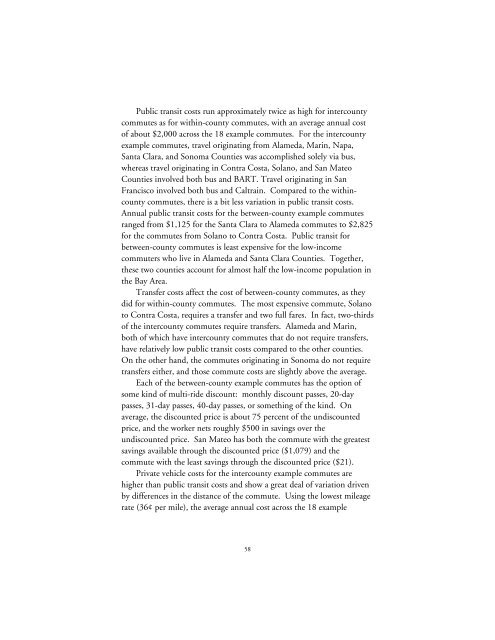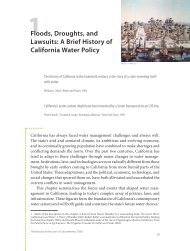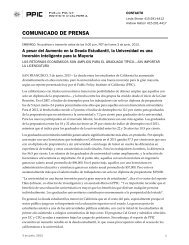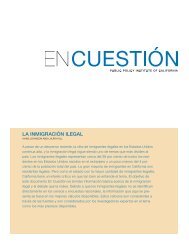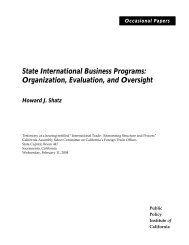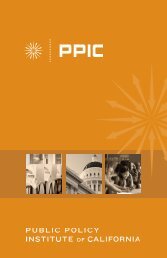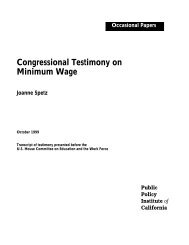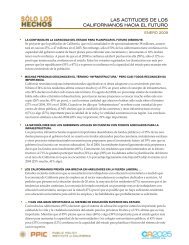Transportation Spending by Low-Income California Households ...
Transportation Spending by Low-Income California Households ...
Transportation Spending by Low-Income California Households ...
You also want an ePaper? Increase the reach of your titles
YUMPU automatically turns print PDFs into web optimized ePapers that Google loves.
Public transit costs run approximately twice as high for intercounty<br />
commutes as for within-county commutes, with an average annual cost<br />
of about $2,000 across the 18 example commutes. For the intercounty<br />
example commutes, travel originating from Alameda, Marin, Napa,<br />
Santa Clara, and Sonoma Counties was accomplished solely via bus,<br />
whereas travel originating in Contra Costa, Solano, and San Mateo<br />
Counties involved both bus and BART. Travel originating in San<br />
Francisco involved both bus and Caltrain. Compared to the withincounty<br />
commutes, there is a bit less variation in public transit costs.<br />
Annual public transit costs for the between-county example commutes<br />
ranged from $1,125 for the Santa Clara to Alameda commutes to $2,825<br />
for the commutes from Solano to Contra Costa. Public transit for<br />
between-county commutes is least expensive for the low-income<br />
commuters who live in Alameda and Santa Clara Counties. Together,<br />
these two counties account for almost half the low-income population in<br />
the Bay Area.<br />
Transfer costs affect the cost of between-county commutes, as they<br />
did for within-county commutes. The most expensive commute, Solano<br />
to Contra Costa, requires a transfer and two full fares. In fact, two-thirds<br />
of the intercounty commutes require transfers. Alameda and Marin,<br />
both of which have intercounty commutes that do not require transfers,<br />
have relatively low public transit costs compared to the other counties.<br />
On the other hand, the commutes originating in Sonoma do not require<br />
transfers either, and those commute costs are slightly above the average.<br />
Each of the between-county example commutes has the option of<br />
some kind of multi-ride discount: monthly discount passes, 20-day<br />
passes, 31-day passes, 40-day passes, or something of the kind. On<br />
average, the discounted price is about 75 percent of the undiscounted<br />
price, and the worker nets roughly $500 in savings over the<br />
undiscounted price. San Mateo has both the commute with the greatest<br />
savings available through the discounted price ($1,079) and the<br />
commute with the least savings through the discounted price ($21).<br />
Private vehicle costs for the intercounty example commutes are<br />
higher than public transit costs and show a great deal of variation driven<br />
<strong>by</strong> differences in the distance of the commute. Using the lowest mileage<br />
rate (36¢ per mile), the average annual cost across the 18 example<br />
58


